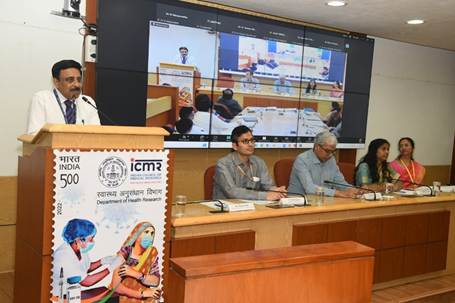India has launched an ambitious inter-ministerial scientific study aimed at addressing the growing threat of zoonotic diseases transmitted from animals to humans. This pioneering initiative, unveiled at the Indian Council of Medical Research Headquarters in Delhi, will leverage the One Health approach to create a real-time surveillance model capable of identifying and managing zoonotic spillovers. The study is a significant step toward integrating human, wildlife, and environmental health to safeguard against potential public health crises.
The project, titled “Building a surveillance model for detecting zoonotic spillover in increased bird-human interaction settings using the One Health approach,” focuses on the unique risks posed by migratory birds and their interactions with human populations. It will be conducted across bird sanctuaries and wetlands in Sikkim, Maharashtra, and Tamil Nadu, where the proximity of humans to migratory birds and forest ecosystems elevates the risk of disease transmission. These regions are located along the Central Asian migratory bird flyway, an area of global ecological and health importance.
The study represents a multi-ministerial collaboration involving the Ministry of Environment, Forest and Climate Change, the Ministry of Health and Family Welfare, and the Ministry of Agriculture. By integrating expertise from these diverse fields, the initiative seeks to establish India’s first early warning system for zoonotic spillovers, ensuring that emerging health threats are detected and contained early.
Central to the study’s methodology is the use of advanced diagnostic tools like Next Generation Sequencing. These technologies will facilitate the early identification of pathogens in samples collected from birds, humans, and their shared environments. Periodic screening of bird sanctuary workers, veterinarians, rescue teams, and local residents will provide critical data for understanding the spread of zoonotic diseases and the environmental conditions that contribute to them.
Speaking at the launch, the Director General of the Indian Council of Medical Research emphasized the need for proactive measures in addressing zoonotic threats. Describing the study as a “radar system” for health surveillance, he highlighted how innovative tools and cutting-edge research can transform India’s ability to respond to emerging health risks. The National One Health Mission, he added, reflects the government’s commitment to leveraging scientific expertise for real-world applications.
The Director of the National Centre for Disease Control also lauded the initiative, underscoring its alignment with the country’s broader strategy to enhance surveillance at the human-animal-environment interface. He stressed the importance of understanding the drivers of zoonotic spillovers to enable timely and coordinated responses.
Other key figures at the launch included representatives from the Office of the Principal Scientific Adviser to the Government of India and the Ministry of Environment, Forest and Climate Change. They highlighted the critical role of inter-ministerial collaboration in ensuring that the scientific insights generated by this study translate into actionable policy measures. The Assistant Inspector General of Forests affirmed the ministry’s commitment to conserving biodiversity while protecting human communities from emerging health risks.
India’s position as a vital hub on the Central Asian flyway adds urgency to the study. Migratory birds serve as potential reservoirs for zoonotic pathogens, and their interaction with local human populations presents unique challenges. Bird sanctuary workers and local residents, who are often in close contact with wildlife, are particularly vulnerable to zoonotic diseases. This study aims to mitigate these risks through comprehensive surveillance and analysis.
By integrating wildlife health, environmental science, and human health, this initiative is expected to set a global standard for managing zoonotic threats. The research findings are anticipated to guide policies that balance biodiversity conservation with public health protection, showcasing India’s leadership in adopting the One Health approach.
The study’s broader implications extend beyond India. As zoonotic diseases continue to pose global challenges, India’s innovative surveillance model could serve as a template for international efforts to address similar risks. The project reinforces India’s commitment to proactive preparedness, ensuring that the country is better equipped to handle future public health threats arising from the complex interplay of human and environmental factors.





